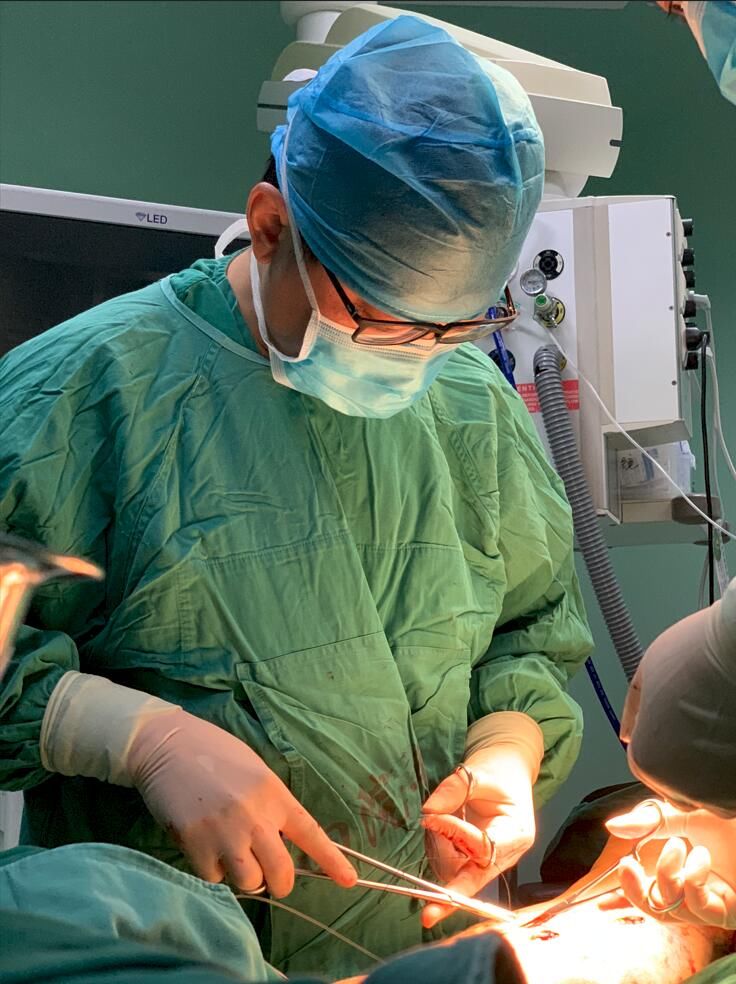Dazhong Net·Poster News reporter Sun Haiyan correspondent Chen Liyan Wang Yan reported from Jinan
In the past few days, in the face of the sudden outbreak of pneumonia caused by the new coronavirus, people have to reduce the probability of travel, Give up outdoor sports and be forced to stay at home. After hard work, when the epidemic prevention and control situation stabilized and improved, another hidden worry gradually emerged—the incidence of lower extremity deep vein thrombosis (hereinafter referred to as DVT) in the middle-aged and elderly population increased sharply.
Swelling of one leg, alert for deep vein thrombosis in the lower extremity
A report from the Department of Vascular Surgery of Jinan Fourth People’s Hospital shows that since this year, The consultation rate of lower extremity DVT in this department has increased by 70% compared with the same period of last year, hitting a new high in recent years.
“This disease is characterized by sudden swelling and pain in one leg, or numbness and coldness as the disease progresses. If a large thrombus falls off and causes pulmonary embolism, it may be accompanied by pulmonary embolism. Difficulty breathing, chest pain, or coughing up blood.” Sun Baohua, director of vascular surgery at the Fourth People’s Hospital of Jinan City, said that leg swelling is caused by the abnormal coagulation of blood in the deep vein to form a thrombus, which partially or completely blocks the venous lumen.
However, most patients do not pay enough attention to the sudden thickening of the unilateral leg. They often use self-massage and hot compress at home to try to relieve the condition and achieve the purpose of self-healing.
“This is completely wrong. In this case, the thrombus may fall off into the lungs and embolize the pulmonary artery, resulting in venous thromboembolism (hereinafter referred to as VTE), endangering the patient’s life.” Sun Baohua said that VTE caused immediate death With a rate of 20%, it is the third most common cardiovascular disease after ischaemic heart disease and stroke.
 Director Sun Baohua is operating on the patient
Director Sun Baohua is operating on the patient
Severe lack of exercise is the cause of lower extremity DVT Main reason
Clinically, lower extremity DVT mostly occurs in bedridden patients after surgery, childbirth, trauma and chemotherapy. In recent years, more and more patients have the disease in the “normal life” state.
“Sitting in the office for a long time, flying for a long time, playing mahjong, playing video games, etc., due to serious lack of exercise, blood accumulates in the lower extremity venous system for a long time, and the blood flow is slow or even stagnant , it is easy to cause DVT.”
In order to better prevent the occurrence of VTE and protect the lives and health of the people, the Fourth Municipal Hospital took the lead in establishing a VTE prevention and control system in the city in the early years. Conservative prophylaxis (graded compression stockings), mechanical prophylaxis (intermittent inflatable compression pump, plantar venous pump) or drug prophylaxis were adopted for the scores, which greatly reduced the incidence of deep vein thrombosis.
How to prevent deep vein thrombosis in the era of epidemic?
Deep vein thrombosis is one of the main causes of venous thromboembolism. In the era of epidemic, how can we prevent it?
Sun Baohua reminded the majority of netizens that in daily life, they should try to avoid sitting or staying in bed for a long time. When staying at home, you should also move around frequently, or do tiptoe (raise your heels and flatten your feet) in place to speed up the blood flow in your body.
Quit smoking. The diet should avoid high sugar and high fat, maintain a low-salt, low-fat and low-sugar diet, drink more water, and people who are overweight should actively control their weight.
If you need to stay in bed after surgery, you should actively engage in lower extremity activities, or raise your lower extremities reasonably to make it 20-30cm above the level of your heart, avoid raising your knees, and get out of bed as soon as possible Activity.
“Once the unilateral leg is suddenly swollen, the patient should firstly stay in bed and raise the affected limb to promote the return of venous blood and prevent the thrombus from falling off, and then be admitted to the hospital for treatment as soon as possible.”
< img class="content_title" height="300" layout="responsive" sizes="(min-width: 320px) 320px, 100vw" src="https://p0.ssl.img.360kuai.com/t011c90ebe681b4bea8.jpg" width="600">
Expert profile:
Sun Baohua, graduated from Peking Union Medical College Hospital with a doctor of clinical medicine, director of vascular surgery. The Vascular Department of Jinan Fourth People’s Hospital can carry out endovascular isolation of thoracic and abdominal aortic aneurysms, endovascular repair of aortic dissection, interventional treatment of diabetic foot, vasculitis, lower extremity arteriosclerosis obliterans, and treatment of lower extremity deep venous thrombosis. Filter placement and catheter thrombolysis, minimally invasive treatment of lower extremity varicose veins, carotid artery stenosis stent placement and endarterectomy and patch plasty, renal artery stenosis stent placement, arteriovenous fistula in patients with renal failure and Various complex peripheral vascular bypass surgery, etc.